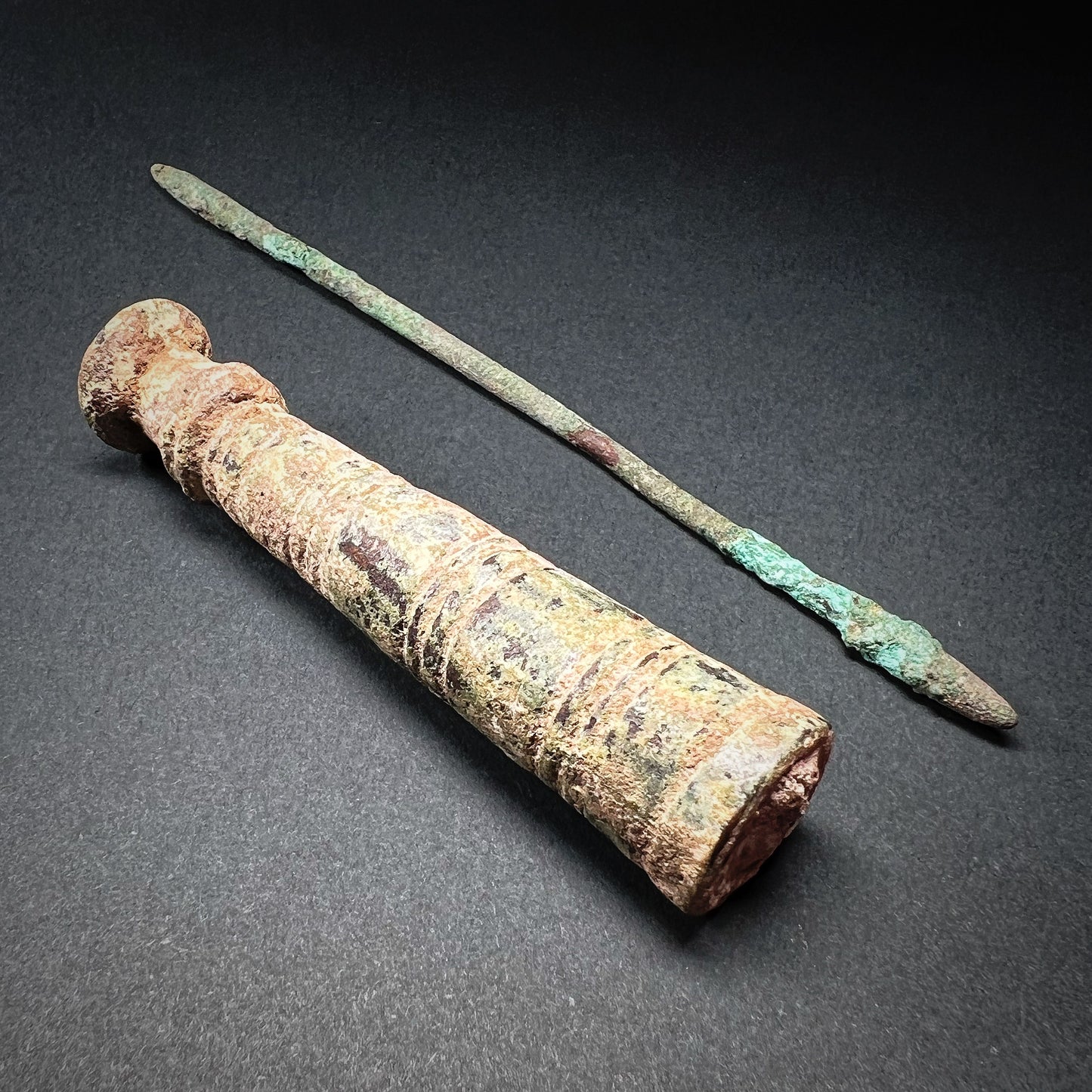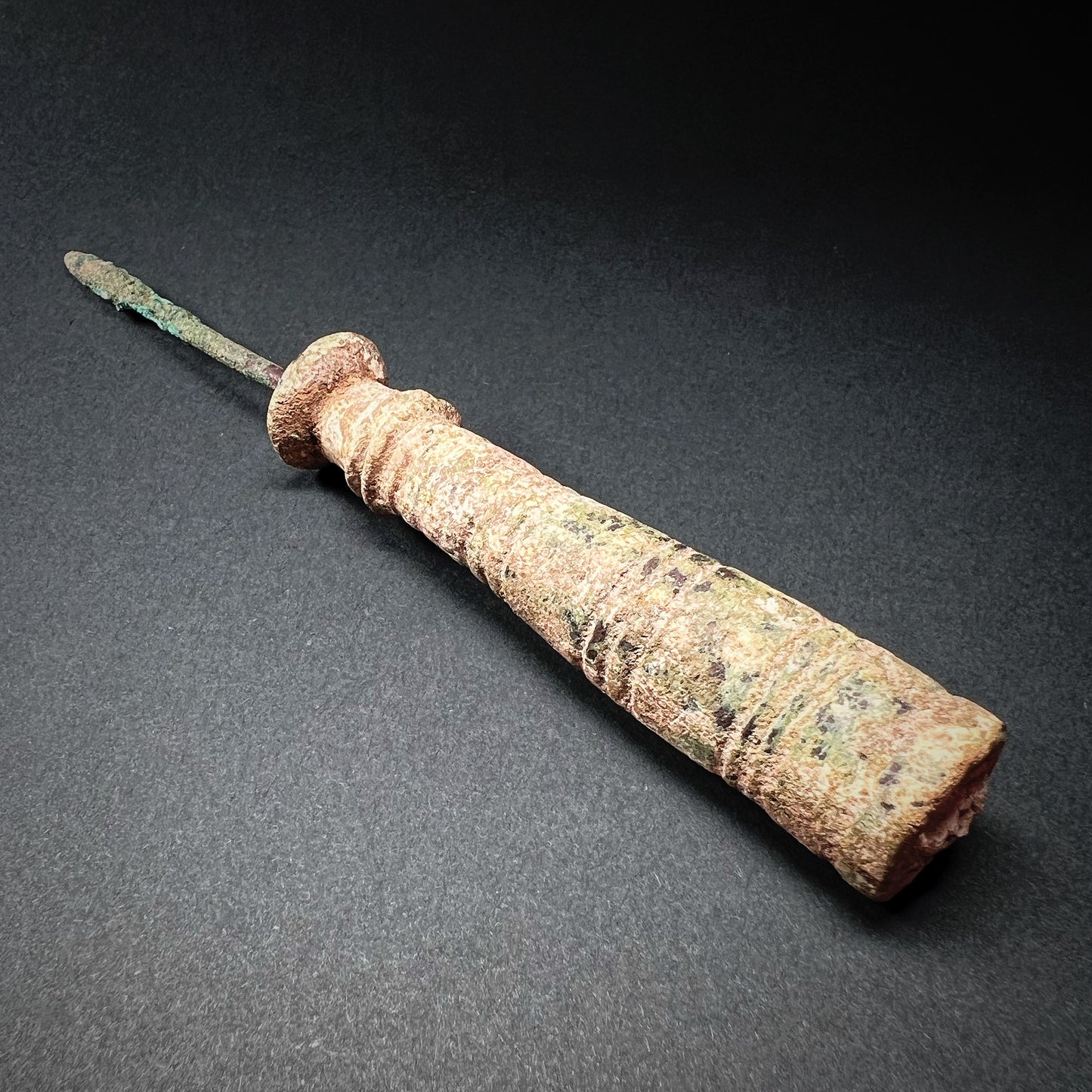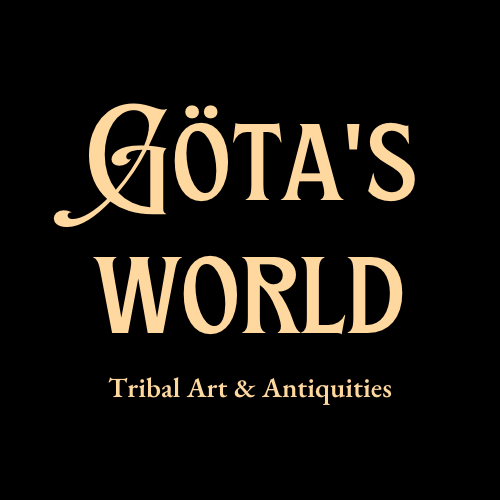Bactrian Bronze Kohl Container with Applicator
Bactrian Bronze Kohl Container with Applicator
Couldn't load pickup availability
Bactria-Margiana Archaeological Complex, c. 2200–1700 BC, Central Asia
This exceptional and rare Bactrian bronze kohl container, dating from approximately 2200–1700 BC, showcases the advanced metallurgical techniques of the Oxus Civilization. Crafted using the lost wax method, the elongated cylindrical vessel features two raised ribs and delicate incised designs along its slender body. The design is completed with a discoid rim and an accompanying slender applicator that fits neatly inside, highlighting both its aesthetic elegance and functional sophistication.
The Bactria-Margiana Archaeological Complex (BMAC), also known as the Oxus Civilization, flourished in Central Asia between 2250 and 1700 BC. Situated between the Oxus River and the Hindu Kush mountains, this culture was renowned for its monumental architecture, advanced irrigation systems, and refined craftsmanship in bronze, ceramics, and jewelry. The region's inhabitants were primarily agrarian, cultivating wheat and barley, while their extensive trade networks connected them to the civilizations of Mesopotamia, the Indus Valley, and beyond.
Kohl, for which this vessel was designed, has been used as an eye cosmetic since at least 3100 BC, particularly in Egypt and the surrounding regions. Made from stibnite or galena, it was applied for both aesthetic and medicinal purposes, believed to protect against eye infections and the sun’s glare. Kohl also held religious and cultural significance, with its use extending across ancient societies. In Islamic tradition, the Prophet Muhammad recommended Ithmid (antimony-based kohl), believing it enhanced vision and promoted eyelash growth.
This finely crafted bronze container, with its intricate detailing and perfectly preserved applicator, is a remarkable testament to the sophistication of Bactrian artisans. It not only reflects the luxury and refinement of ancient cosmetic practices but also serves as a tangible link to the cultural and artistic achievements of one of Central Asia’s most enigmatic early civilizations.
Good condition. Wear consistent with age and use. Surface scratches and corrosion due oxidation. Built up verdigris patina, rich earthen deposits. Size approx. 8,2cm x 1,5cm x 1,5cm and the applicator 13,5cm x 0,4cm. Sell as a set.
Provenance: Danish private collection.
For a similar examples see:
Cosmetic container, The Metropolitan Museum of Art, Accession Number: 1983.535.37 (https://www.metmuseum.org/art/collection/search/326790)
Cosmetic-bottle, The British Museum, Accession Number: 1936,0613.130 (https://www.britishmuseum.org/collection/object/W_1936-0613-130)
Cosmetic container, The Metropolitan Museum of Art, Accession Number: 1983.535.38 (https://www.metmuseum.org/art/collection/search/326791)
References and further reading:
Margus, Turkmenistan: Ancient oriental kingdom in the old delta of the Murghab river, Wiktor Sarianidi, Publisher Benatzky Druck & Medien, January 1, 2002.
Treasures from the Oxus: The Art and Civilization of Central Asia, Massimo Vidale, Bloomsbury Publishing, 2017.
Thinking Around Grave 3245 in the 'Royal Graveyard' of Gonur (Murghab Delta, Turkmenistan), in: On the Track of Uncovering a Civilisation. A volume in honor of the 80th-anniversary of Victor Sarianidi, Sandro Salvatori, 2010.


-
Shipping
The shipment will be prepared in the course of 3-5 days and dispatched via Posti Group Oyj or purchased item(s) can be picked up from our shop during the store's opening hours (Tarkk’ampujankatu 4, 00140, Helsinki, Finland). Within the Finland, all items are shipped via Posti Group Oyj unless otherwise requested. We pack the items carefully and mainly in recycled materials because we want to save nature. You will receive the tracking number for your items by e-mail.
-
Returns
Returns and exchange will be accepted within fourteen days (14) of receipt at the purchaser’s cost to include freight and packaging. Items must be returned in the same condition as when they were shipped, and will not be accepted if damaged or altered in any way. Please inform us via email (info@gotanmaailma.fi) or by calling +358408408352 before sending. We do not accept returns more than 14 days after delivery.


